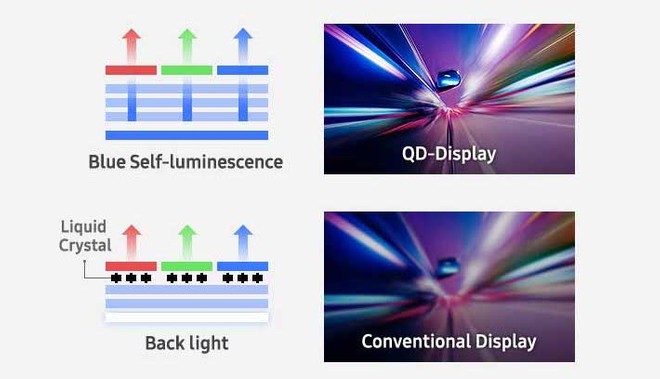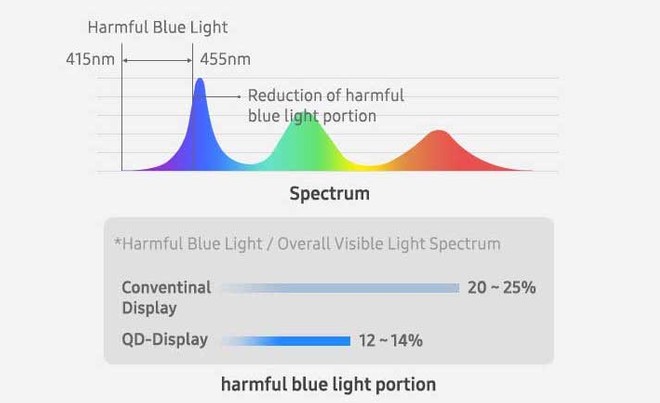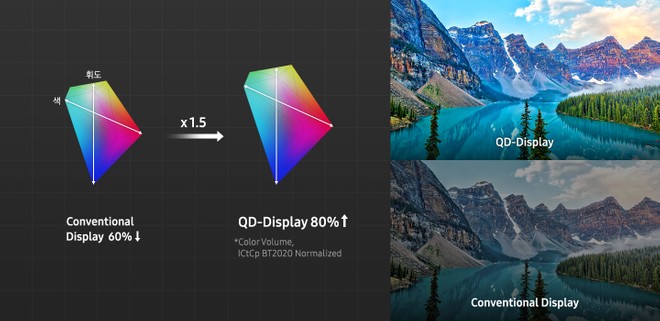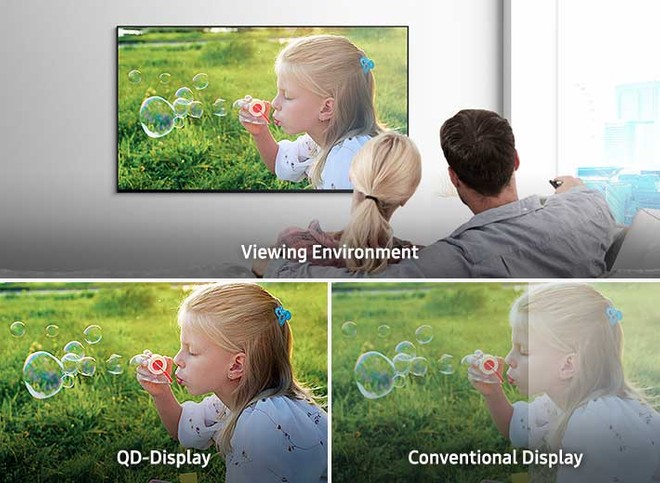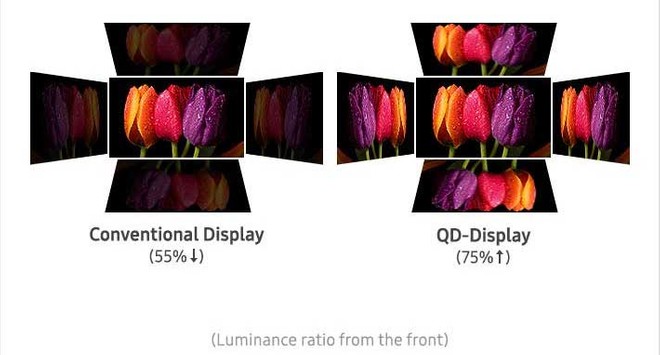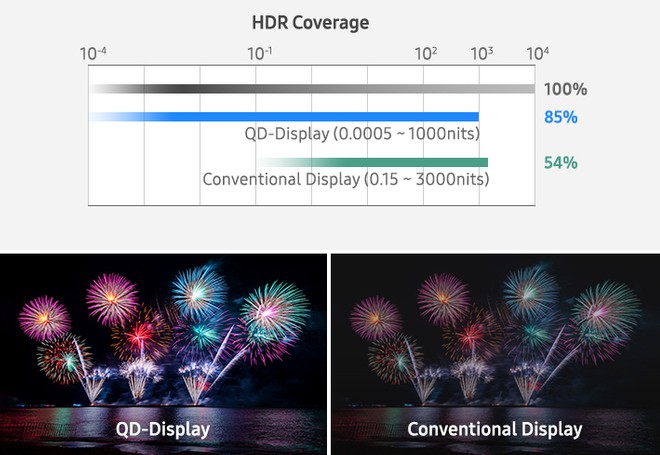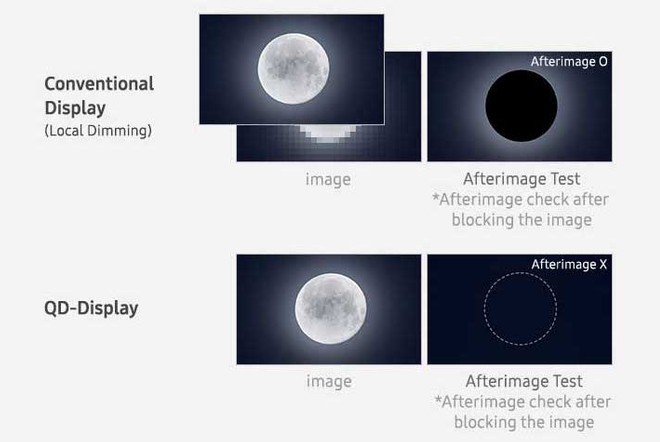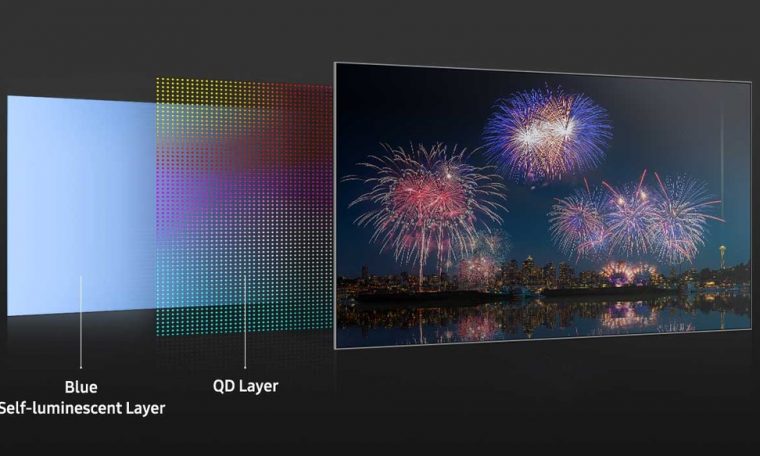
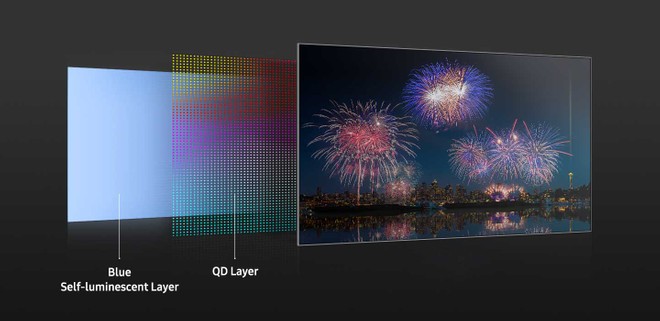
The latest confirmation has also arrived: samsung display Have published an official page dedicated to QD-OLEDs (link in source), screens made with blue OLED emitters combined with quantum dot. Later The Korea Economic Daily newspaper preview And this Press Release issued by UBI Research, thus closing the circle with a complete authoritative source. explicitly does not talk about Samsung Display TVs, which are understood as complete and finished products, but limits itself to reflecting the merits of the technology as a manufacturer of panels (Samsung Visual Display Division Makes TVs for Samsung Electronics).
Technology takes the name of QD-Display
Let’s start with the name: Samsung never mentions the term OLED, which isn’t surprising when you consider type of communication Which the Korean giant has done in recent times. new technology is called QD-display, short for quantum dot display. The structure of the screen is what we’ve already learned about: everything begins with Organic blue emitters are able to diffuse their own light and turn each pixel on and off.
For this layer, is called “blue self-luminous layer“, NS”QD layer“, an additional layer containing red and green quantum dots. Some of the blue light is easily passed through while the rest passes through the QD layer which converts it, absorbs it and to the red and green components It emits again in pure form. It’s the way you get all the RGB primary color components. Samsung also claims that The amount of blue light harmful to the eyes is reduced: To be precise, it goes from 20-25% of traditional LCD displays to 12-14% of QD-displays. Hence the reduction is between 40 to 50%.
Expanding the amount of color
As far as color reproduction is concerned, QD-displays one can rely onHigh purity for all colored components, from the blue color of the OLED emitter to the red and green obtained through the quantum dot. As a result of this feature a Extensive Color Quantity (Here we explain what it is and what it’s for): you can reachBT.2020 is 80% normalized relative to the color space and measured according to the ICtCp standard. To “normalize” the amount of color means to tie its coverage to the specific luminance peak for that particular screen.
The use of organic components makes it possible to reduce the response time of the panels (not to be confused with latency in processing the signal, i.e. input lag), a fact that is common to all OLEDs. The need to control the liquid crystal makes the LCD less responsive in this regard.
A proprietary technology to reduce reflections
Another expected and apparently current improvement is the ability to spread light evenly in all directions. Simply translated this feature means that the QD-display has a Wider viewing angle than LCDs. If you angle yourself 60 degrees from the center, traditional LCDs are able to express less than 40% of maximum brightness while QD-displays retain more than 70%.
NS Reflection Reduction Techniques Samsung Display guarantees better visibility even in difficult conditions, with direct sunlight coming from the window or artificial sources affecting the screen (this type of filter has already proven to be very effective on Samsung QLED).
1.000 NIT . on full black and peak
QD-Display has a . Will happen ultra hd resolution and they can count on a very wide dynamic range. The range covered is between 0.0005 cd/m2 – nits for black this is Brightness peak equivalent to 1,000 cd/m2 – nits for white. The data relating to black should not be misleading: it is the same value that is needed to obtain Ultra HD Premium Certification 540 cd / m2 – when combined with a peak of nits. In fact it indicates complete black.
The peak is usually associated with OLED TVs, but the data showing the area covered with white is missing. The diagram above notes how the conventional display taken as a standard ranges from fairly high blacks (0.15 cd/m2 – nits) and peaks reaching 3,000 nits, which are typically from video mode. is connected. Not very useful in real conditions and which is kept for a short period of time.
However, if the declared 1000 nits were relative to white on 10% of the screen, then QD-displays would actually be brighter than OLEDs that stand out in this sense, such as LG G1 (Recently Tested), I Sony A90J (review here) EI Panasonic JZ2000 (Prezi).
Samsung Display then lists another quality that OLED screens have long been known for: the ability to control the emission of light on individual pixels allows you to precisely define light and dark, as in that the halo of light (so-called “blooming”) that can be produced on an LCD when bright elements mix with very dark areas (already incoming light pollutes the black).
more saturated colors that appear brighter
Samsung closes by talking about the contrast ratio: when a good white peak is approached with a perfect black, what the viewer perceives is a contrast too high, regardless of the measure of the white peak. Actually be less than the LCD screen. Traditional. This aspect is also one of the now recognized advantages of all OLED TVs and QD-displays are no exception.
The difference, compared to WRGB OLED, should include better color saturation when the brightness on the screen is increased, as the measure of color volume (which attests to this trend), is directly linked to the RGB composition of pixels, theoretically. The display is wider than other OLED TVs. More saturated colors appear brighter to the eye even when brightness is low Because of the so-called Helmholtz-Kohlerausch effect.
No further details are available at the moment: dedicating a page to the new technology although it is a clear indication that all the information that has recently circulated is almost certainly correct. Other news will probably come in the months that separate us From CES 2022, Phase Where we will almost certainly see the debut of the first QD-display televisions.

